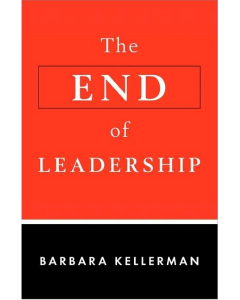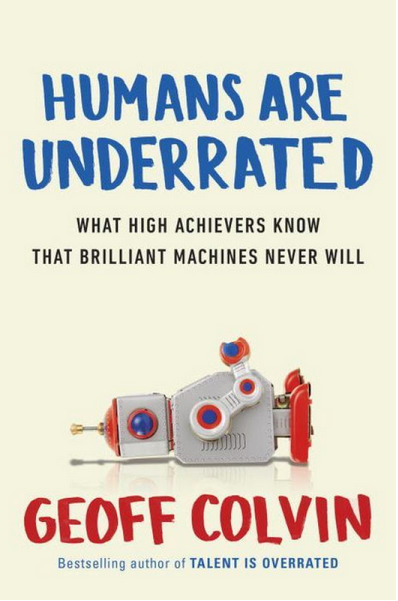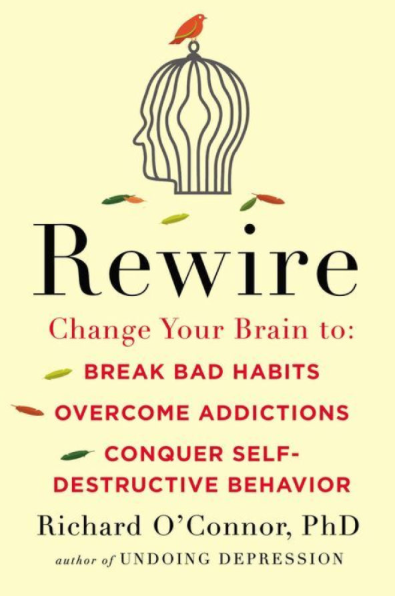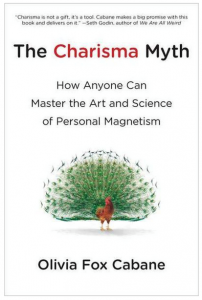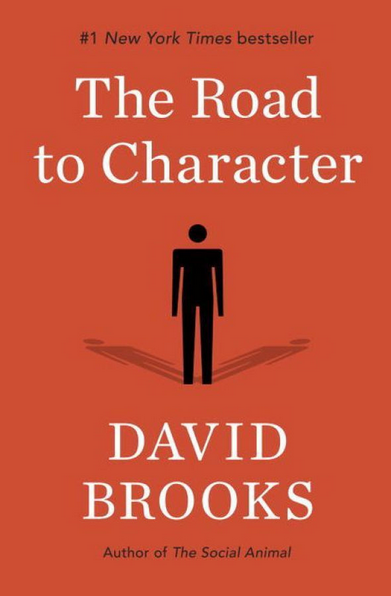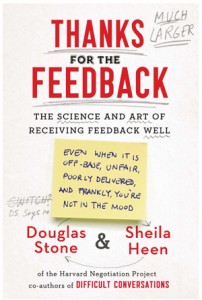Leadership Institute
Past Book Club Reviews
|
April 2022 Amplify your influence by Dr. Al H. Ringleb It is difficult to image but LIFE has been an integral part of the CIMBA experience for almost 20 years now. From its very beginnings, the CIMBA LIFE Experience was intended to assist our graduates in managing the difficult transition from the individual nature that is education and academia, to the team environments that then, and certainly now, have come to dominate the work environment. Assisting our graduates in developing important skills and attributes that allow them to better regulate their emotions and manage stress has allowed many of them to move up much more rapidly into the upper ranks of important companies where they have made the difference in so many lives – the first and foremost characteristic defining success in this organization. Along the way, our LIFE Experience has also assisted them in understanding the important concept of psychological safety, something we referred to so many years ago as emotional safety. In just the last few years, its importance has finally come to be recognized as a fundamental ingredient in building productive, creative, and healthy team and work environments. |
|
May 2021 The Negotiations Process: What The Executives and I Learned by Dr. Al H. Ringleb This past month, I had the great pleasure of teaching the CIMBA Negotiation Strategies and Techniques Workshop (And What it Means in Both Your Personal and Professional Lives) in our Executive Certificate Program, which included participants from both this year and last year’s classes. It was a powerful learning opportunity and experience for me as the last time I taught negotiations was more than 20 years ago. In the interim, we had turned the class over to Prof. George Siedel, a recognized negotiations expert, who took over the responsibilities for teaching the class and became an important member of the CIMBA faculty. |
|
|
March 2021 My Five Best Character Traits for Life by Dr. Al H. Ringleb What is the intended purpose behind the AVCs? As we stated in the first AVC, I receive a number of emails from students asking me how I do or would approach a particular issue. To the extent it would require stating or revealing a personal preference, I would be very reluctant to answer such an inquiry in class or a classroom setting. |
|
|
February 2021 The Intent of AVC by Dr. Al H. Ringleb What is the intended purpose behind the AVCs? As we stated in the first AVC, I receive a number of emails from students asking me how I do or would approach a particular issue. To the extent it would require stating or revealing a personal preference, I would be very reluctant to answer such an inquiry in class or a classroom setting. |
|
|
January 2021 Al’s Video Chat by Dr. Al H. Ringleb In this ABC I would like to introduce you to a new, additional version of the ABC. It is a live edition of the ABC to be held on Thursday, February 11, at 6 PM. with the expectation of others to follow. Let me explain a little about from where it originated and what its intent and purpose is. That said, I do hope you will take a bit of your precious time and join us. |
|
 |
October 2020 The Pandemic – Technology “Partnership” by Dr. Al H. Ringleb In full transparency, this ABC is an open call to all members of the CIMBA family to rise to the occasion and make a difference. Let’s go back one year and reflect on where we were, to better understand where we are, to guide and assist us in raising the probability of reaching a preferred destination as we contemplate where we are going and how you might be of help in seeing that others get there. |
 |
July 2020 Developing Self-Awareness at CIMBA by Dr. Al H. Ringleb The summer months give us the opportunity to take apart various components of our development system and make repairs, refine processes, calibrate technology, and test new approaches. Particular interest this summer has been placed on those brain circuits making up our Social Brain: those highly specialized neural pathways defining our Self-awareness, Social Awareness, and Self-Regulation abilities. Of primary interest is the integration of the LIFE bio-data and the various psychometric assessments that support each of these three neural pathways. Our intent is to create a “Workbook” for each of the three that provides its Science, Guidelines, and Assessments. One of the more interesting investigations has been Self-Awareness. As a first here in the ABC, we are going to present a “Beta” version of this activity, and seek your feedback. Please send your thoughts to info@cimba.it. |
 |
April 2020 What does neuroscience say about building and maintaining relationships when to we are required to work from home? by Dr. Al H. Ringleb As we endure the lockdown, most of us are beginning to realize that it can put a strain on our work relationships. One of the principal day-to-day activities that allows us to get along and maintain trust and relationships is our social interactions. Our social effectiveness, our abilities to form and maintain relationships, work together in groups, and empathy are deeply, essentially human skills that we often take for granted. But they are the key ingredients to effective teams in the workplace. Without a common workplace, these important skills can be difficult to establish and maintain in organizations. |
 |
March 2020 Our Social Responsibilities in this Time of Crisis by Dr. Al H. Ringleb Research has demonstrated that 90% of us will experience at least one major trauma event during our lives – a violent crime, domestic violence, a serious auto accident, the unexpected death of a loved one, or, as we are experiencing now, a debilitating disease or virus. Traumatic events throw our lives into turmoil in unpredictable ways. No two people will respond to them in exactly the same way. Most of us will find ways to meet the challenges and continue our lives. While we may feel stressed for a time after the ordeal, we will bounce back and carry on – much as though it never occurred. However, there are three particular groups who are at elevated levels of risk for whom we should be attentive and supportive throughout this ordeal. It is on those groups, and our responsibilities for their well-being, that I would like to focus our attention. |
 |
December 2019 HR Strategy and Neuroscience in the Socially Sensitive Worker Era by Dr. Al H. Ringleb Neuroscience has had a profound impact on thinking in personal and organizational development over the past two decades. Many past development theories upon which we grew (or were obligated or expected) to rely have been shown through neuroscience research to have been at best misguided or at worst outright wrong, explaining, in major part, why they have been so demonstrably ineffective in creating leaders. Unfortunately, reluctance to adopt those research findings coupled with seemingly inherent organizational resistance to change has restricted their benefits to an enlightened few, although competition will certainly make such resistance more costly going forward. Many in HR who are open to and intrigued by neuroscience often hedge their expectations through continued reliance on traditional classroom-based teaching and learning paradigms for content delivery, significantly inhibiting its usefulness and personal development potential. Similarly, hiring and promotion decision criteria remain mired in the old Knowledge Worker Era thinking of the past, all the while new technology is pulling us rapidly into the new Socially Sensitive Worker Era of the present and future where interpersonal, as opposed to technical, skills are rapidly becoming the most advantageous to both the individual and the organizations they serve. In this specific regard and with reference to HR Strategies, the Socially Sensitive Worker Era has far greater need of neuroscience and its insights into human behavior than was the case in the Knowledge Worker Era. |
|
|
February 2019 Mindware by Richard E. Nisbett Seemingly from my earliest moments, I have had a fascination with numbers and mathematics. The realities of likely job prospects served to focus that fascination more in the direction of applied, as opposed to theoretical, mathematics. Additionally, some of my least motivating teachers in my early years were my math teachers, making a career as a teacher of mathematics quite unattractive. I could never understand how something so fascinating could be made to be so boring and, worse, often unnecessarily frightening for too many of my classmates. Somewhere during my mathematical indoctrination, I was introduced to an interesting quote from HG Wells, who in 1892 said: “Statistical thinking will one day be as necessary to citizenship as the ability to read and to write.” Several decades later that HG Wells quote began to take on a renewed relevance in my thinking due in no small measure to my most recent fascination, neuroscience. As we consider here the interesting work of Prof. Richard E. Nesbitt, Mindware: Tools for Smart Thinking, I encourage you to join me in considering whether the importance of statistical thinking predicted by Wells more than 100 years ago has finally come to pass. Much of that importance has been suggested through the use of brain imaging technology available only in the past 20 years. That technology has allowed neuroscientists to develop a far deeper understanding of brain function, and the concept of interest here, System 1 Cognitive Thinking Errors. Can a solution to those errors be the statistical thinking to which Wells referred? Could Wells’ notion of statistical thinking assist us in overcoming our false inferences, unverified assumptions, stereotypes, biases, prejudices, and preconceived ideas and beliefs that lead us to rush to judgments, decisions, and conclusions often to our detriment and those around us? |
|
|
October 2018 Awareness by Daniel J. Siegel, MD CIMBA has had a long and beneficial relationship with Dr. Dan Siegel. His insights on a variety of issues have served to clarify our thinking and direct our attention toward more productive processes and procedures. He was one of the very first scientists to encourage us to look to mindfulness as an important tool for supporting the personal development efforts of our student and executive participants. He has also had important impacts on our coaching function, in many ways liberating us from some of the “theoretical” constraints initially imposed by the traditional coaching “profession.” His book Aware: The Science and Practice of Presence is yet another important addition to the long list of contributions Dan has made to our development system. Let me begin with a little background information to assist you in seeing some of the fundamental linkages that are both developed and elaborated on in this book. |
|
|
February 2017 Elements of Surprise by Vera Tobin One of the concepts we make use of in developing an understanding of the functions of the human brain is a System 1 vs. System 2 thinking distinction. As many of you will recall from your Professor in LIFE, our brain processes sensory information in two very distinct ways: through our System 1 Circuitry (Fast Thinking) and through our System 2 Circuitry (Slow Thinking) circuits. Our brain’s System 1 circuitry is evolutionarily old, automatic, non-conscious, emotional, operates in parallel, and demands relatively little brain energy to function. As our primary, survival-based, brain circuitry, System 1 is responsible for generating fight, flight, or freeze reactions to threatening physical or social stimuli, real or perceived. As such, it cannot be turned off. We have no sense of voluntary control over its activities and its operations. It effortlessly activates our habits (good or bad), and is responsible for making active use of our biases, stereotypes, preconceived ideas, and emotional reactions as it pushes us confidently to quickly jump to conclusions. By contrast, our brain’s System 2 circuitry is a more recent, distinctively human system that is rule-based, controlled, conscious, operates in serial, and is highly energy intensive. Its mental processes are learned, flexible, and responsive to rational norms. |
|
February 2017 Presence by Amy Cuddy Nearly 50 years ago, in his seminal work Management: Tasks, Responsibilities, and Practices, the eminent management and leadership scholar Professor Peter F. Drucker first brought us to the notion of the “social brain” in an organizational context: “Management is a social function … [T]he manager must be more than a ‘technocrat.’ He cannot be confined to his discipline, cannot be content with mastery of his skills, his tools, and his techniques. [Drucker, page 18] |
|
|
December 2016 The End of Leadership by Barbara Kellerman Leadership BS by Jeffrey Pfeffer Over the past several years I have come to appreciate an additional aspect of the holiday season that in large measure was surfaced by this ABC blog. I found myself looking forward to reconnecting with friends, colleagues, alumni, and many others, something that was made even easier by the CIMBA Alumni and Friends Christmas party, which is now become an important institutional tradition. Taken together, they form a point in time in which we an obligation to take a moment and reflect upon where we have been and where we are going. |
 |
January 2015 Naturally Selected by Professors Van Vogt and Ahuja’s This book was written some 5 years ago, but only recently did we become aware of its significance. The author’s basic premise is that we are wired to be followers — consistent with our observations at the ropes course. The “why” of their argument follows on directly from the thinking of Professor Dunbar. |
 |
December 2014 Thinking Big by Dr. Robin Dunbar Dr. Dunbar is recognized for building evidence in support of the core notion that the human brain got bigger, it evolved, in order to manage its demanding social responsibilities – his Social Brain Hypothesis. In the book, Thinking Big: How the Evolution of Social Life Shaped the Human Mind, Dr. Dunbar and his colleagues put together the pieces that led to the development of his theory and then provide us with a variety of studies that have been undertaken over the past 15+ years since he introduced it. |
 |
November 2014 The Upside of Your Dark Side I would like to look at “Change is difficult” expressly, and particularly at the “difficult” part of the equation. To assist us toward this end, I encourage you to consider a this very interesting book. The authors’ basic premise is that every human emotion is useful, that all physiological states have some adaptive advantage. |
 |
October 2014
The Marshmallow Test by Walter Mischel After some initial investigation, and using both our data at CIMBA and our observations of students within our Leadership Development system, we saw that the social pain experience was a very interesting reflection of Prof. Mischel’s famous marshmallow test. |






